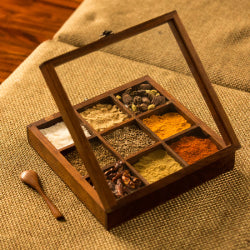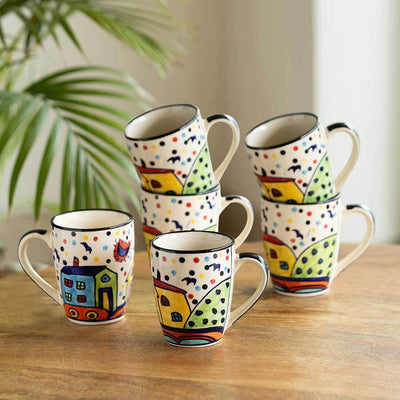The History of the Traditional Indian Dhurrie
In India, dhurries were traditionally used as woven floor coverings, and can still be found in many homes today. Dhurries are remarkably versatile and can be used for a variety of things, including bedding and packaging, but their primary function is as a floor mat. The dhurries range from small enough to cover telephone stands to large enough to cover large gatherings. The Dhurries were traditionally used to cover floors, however, their attractive patterns have made them popular as wall hangings. Dhurries have a low cost, are easy to maintain, and don't get soiled by pests and insects like silverfish, which affect carpets. The versatility of cotton dhurries allows them to keep you warm during winter and cool during summer. Early in the study of crafts, dhurries were dismissed as a poor man's carpet and discounted in terms of value. As time progressed, however, it became increasingly popular due to its abstract designs and contemporary appeal. Due to the fact they are woven, these dhurries have the benefit of being reversible, which increases their functionality. Their weaving method provides greater flexibility in creating more varied designs in comparison to carpets. Traditionally, dhurrie making is done by women of the house. In order to weave, one just needs a 'punja', a 'pit loom', or just two horizontal bars at hand. With this basic set up they can begin weaving quickly. There are two basic techniques associated with dhurrie making; the ‘punja’ technique and the traditional ‘pit loom with the fly shuttle’. Punja looms require a simpler setup than traditional pit looms. Traditionally, cotton is spun by women, and the yarn is dyed by men.

The origin of the handwoven dhurrie
A dhurrie's origins can be traced all the way back to the ceremonial floor paintings of India. The pattern drawing on the walls and floors of Hindu and tribal homes was believed to keep evil spirits and energies away. Using these patterns, one prays for protection from negative energy and invokes the deities. The fusion of religious belief systems and a love of art and decoration resulted in an intricate art form where the home becomes the canvas
There is the earliest depiction of the dhurrie, found in the Ajanta caves' Mahajanaka Jataka painting. An Indian dhurrie is depicted in the painting of King Mahajanaka as he stands on it. According to the Mughal chronicle, 'Ain-i-Akbari', 'Satranji' or flatweaves were produced by royal workshops in Lahore, Agra, and Fatehpur Sikri. The paintings of the Mughal emperors also contain references to the prophets' birthday, such as 'Shah Jahan in Darbar' (c.1630), 'Agra', 'A Night Celebrating the Prophet's Birthday, etc. One of the finest examples of an Indian flatwoven rug can be found in Ahmedabad's Calico museum of textiles. It originally belonged to the Ambar palace in Rajasthan. It was woven in Lahore around the middle of the 17th century and has a cotton warp and woolen weft. As part of the Indian pavilion of the Great Exhibition at the Crystal Palace in London, a dhurrie with tile designs served as a backdrop. In prisons, dhurrie making was seen as a suitable professional and recreation activity because it could be done in small productions. From the Government of United Provinces, the ‘All India Weaving and Printing Competition’ was given to Bikaner Central Jail in the late 1930s. This established two organized segments of weaving: private enterprise and prison industry. An important third segment was the village industry. With the establishment of workshops in towns and the setting up of cotton mills, the private and commercial sectors advanced. As production dwindled, a niche market arose for prayer mats and striped dhurries. Striped dhurries were found all over India because of the pressure to buy only British-made products. India's dhurrie weaving tradition has grown to be one of the most vibrant and important aspects of village life. A vast decorative vocabulary filled with cultural symbolism has been passed on through generations. Traditionally, designs have been passed on to pass on skills and as dowries. The main centers of dhurrie production in Madhya Pradesh are 'Sironj', 'Jhabua', 'Raigarh', and 'Jabalpur', where women mostly work on their craft in their homes. These Dhurries are famous for their sturdiness and bright color palettes, as well as for their strength and durability.

The design of Dhurrie
Most of the motifs and patterns in dhurries are geometric. It is possible to find a wide array of designs that take their inspiration from local architecture, flora, and fauna. Most commonly seen in dhurries are stripes, geometric variations, sprawling vines, peacocks, trees of life, hunting scenes, and medallions. Dhurries also incorporate kiln designs. Dhurries also depict popular tales and stories. Madhya Pradesh dhurries traditionally have a pinkish-white background with bright red patterns. A black or bright red line separates the patterns. The complexity of motifs, like the 'Neempatti' motif that features 24-petal flowers surrounded by leaves and flowers, is a good indicator of the skill of the craftsmen. One of the most common designs is the ‘Surajmukhi’ or sunflower design. Our handicraft store ExclusiveLane's Panja dhurries collection presents exquisite Panja handwoven Dhurries in refreshing and classic colours depicting traditional stripes and minimalistic and sophisticated geometric motifs for your living room, bedroom, and patio. These also make wonderful gifts!







Leave a comment